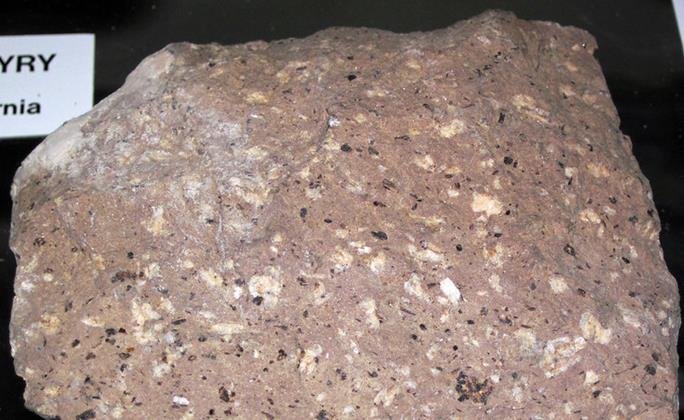A porphyry (plural porphyries) is an igneous rock with large, well-formed mineral grains set in a finer-grained matrix. Such rocks have two distinctive crystal sizes: large and small.
The larger mineral grains are called phenocrysts. Phenocrysts are well-formed because they mainly grow unimpeded, and most represent the higher-temperature minerals that crystallize earlier. However, some phenocrysts crystallize later.
On the other hand, the finer-grained matrix is known as the groundmass. The groundmass can be fine-grained, medium-grained, or coarse-grained. However, if it is glassy, the resultant rock is a vitrophyre, not a porphyry.
The word porphyry originates from the ancient Greek word porphyra or porphúra, a purple dye from gastropods. It may also refer to the gastropod from which dye is derived.
Pliny the Elder (Gaius Plinius Secundus), a respected Roman author, naval army commander, and naturalist, coined the name porphyry.
Porphyry originally refers to the purple or reddish porphyritic rock mined in Egypt. This rock had a composition ranging from dacite to trachyandesite. However, today, porphyry is a textural term, not a rock type.
The original porphyritic rock, red, purple, or Roman Imperial porphyry, was highly valued by the Romans and Byzantines during the antiquity age. Some of the uses of the Roman porphyry included making dimensional elements, ornaments, and artwork items exclusively for the imperial court of the Roman Empire.
The other term you should familiarize yourself with is porphyritic or phyric. This adjective comes from porphyry, or phyre (used in the US), and describes phenocrysts embedded in a groundmass.
You can use the terms porphyry and porphyritic to refer to any igneous rock with large mineral grains set in a fine-grained matrix. Leonhard was the first to use this in this sense for the first time in 1823.
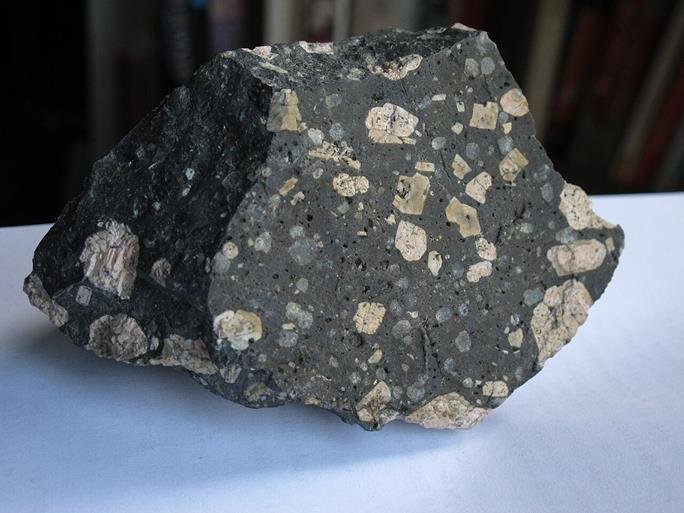

Note: Porphyry of Tyre
Porphyry of Tyre (Malchus) was a Neoplatonist philosopher born in Tyre, the city of purple in Roman Phoenicia (now Lebanon), in about AD 234.
He studied Cassius Longinus in Athens and later under Plotinus, the founder of modern Neoplatonism in Rome.
He is credited for editing and publishing The Enneads, his teacher Plotinus’s only collection of work.
Using the terms porphyry and porphyritic
You can prefix porphyry with a rock name or composition, such as andesite or basalt porphyry. Andesite or basalt tells you the composition of the respective rock.
Another way is to prefix the term with phenocrysts present, such as feldspar-quartz or feldspar porphyry, or as a textural term. An example is rhomb porphyry.
On the other hand, the word porphyritic or phyric is an adjective from the noun porphyry. It describes the texture of igneous rocks describes igneous rock with modal crystal size. You can use it as a prefix to a rock or composition name.
How do porphyries form?
Porphyries in volcanic rocks form from two-stage cooling. One is slow deep inside that grows the phenocrysts, and the other is close to or on the Earth’s surface, which forms the finer-grained groundmass.
However, plutonic rocks can form when some high-temperature crystallize earlier in composition out of eutectic composition. This allows such minerals to grow large, forming phenocrysts.
Another way is when some minerals nucleate and grow at different rates. Those that nucleate less and grow faster form phenocrysts. In contrast, those that nucleate more and grow slowly will form the groundmass.
14 porphyritic rock examples
Porphyritic rocks occur in all rocks, intrusive, extrusive, or hypabyssal of any composition.
Intrusive form deep inside the Earth’s crust and extrusive on the Earth’s surface, while hypabyssal, also known as subvolcanic, form at shallow depths of less than 2 km (1.2 mi) from the Earth’s surface.
The composition of porphyritic rocks can be mafic, intermediate, or felsic. Felsic are acidic rocks with > 63 wt.% silica. These rocks have mostly light-colored minerals like oxygen, silicon, sodium, and oxygen.
On the other hand, mafic rocks are basic with 45-53 wt.% silica. These rocks are rich in darker-colored elements, i.e., magnesium and iron.
Intermediate lie between felsic and mafic. It has a mesocratic composition of silica, darker, and lighter elements.
Some of the common porphyritic rocks include the following:
1. Basalt porphyry
Porphyritic basalt is a mafic volcanic rock with mostly labradorite (calcic plagioclase), augite, olivine, and sometimes hornblende in a fine-grained groundmass.
The groundmass is dominated by calcic plagioclase and augites with minor olivine, enstatite, pigeonite, quartz, or feldspathoids. Also, it may have biotite or hornblende, with accessory minerals being spinel, apatite, chromite, ilmenite, and magnetite.
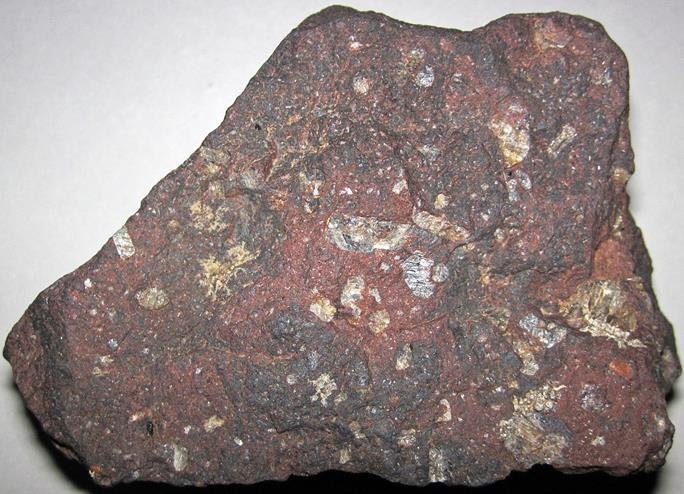
Basalt is the volcanic equivalent of the coarse-grained gabbro rock.
2. Rhyolite porphyry
Phenocrysts in porphyritic rhyolite are alkali feldspar, quartz, and sometimes plagioclase, hornblende, pyroxene, and mica in a fine-grained but phaneritic groundmass.
The groundmass has alkali feldspar, plagioclase, quartz, minor hornblende, muscovite, biotite, or pyroxene (fayalite) with accessory minerals, including ilmenite or magnetite.

Rhyolite is a fine-grained, light-colored felsic rock. It is the extrusive equivalent of granite, a plutonic rock.
3. Andesite porphyry
Porphyritic andesite is a volcanic rock with phenocrysts of plagioclase and, less often, pyroxene or hornblende in a fine-grained groundmass. Also, this rock may have biotite, apatite, titanomagnetite, magnetite phenocrysts, and rarely quartz.
The groundmass has mostly plagioclase, minor pyroxene, hornblende, and sometimes alkali feldspar, quartz or feldspathoids, muscovite, and glass. Also, it may have accessory minerals like zircon, magnetite, ilmenite, garnet, or apatite.
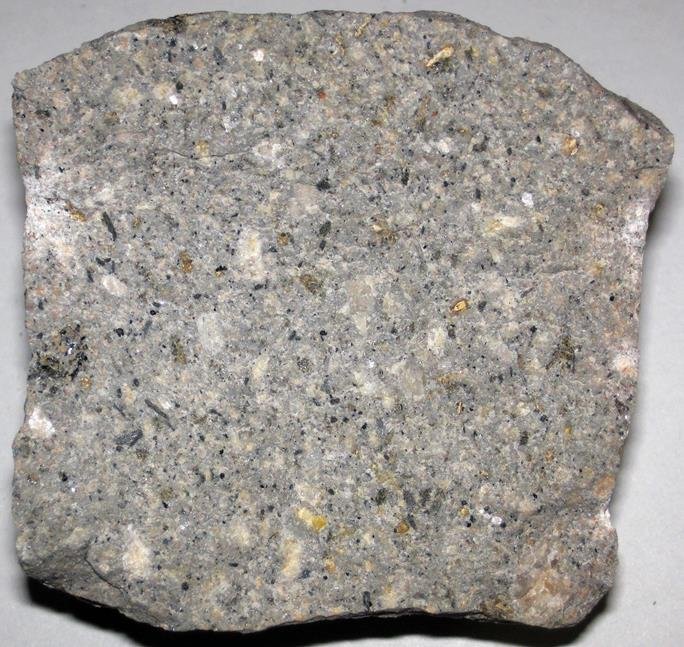
Andesite is a fine-grained, medium to dark-gray intermediate rock. Its composition is between basalt and rhyolite rocks and is intrusive or plutonic equivalent is diorite.
4. Granite porphyry
Granite rocks with porphyritic texture have phenocrysts of alkali feldspar, quartz, and less often biotite or plagioclase in a finer but phaneritic groundmass.
The groundmass has mostly alkali feldspar, quartz, plagioclase, minor mica, muscovite, amphibole, or mica. Also, it will have accessory minerals like zircon, magnetite, apatite, titanite, etc.

5. Gabbro porphyry
Porphyritic gabbro has phenocrysts of mostly calcic plagioclase, less of augite, and sometimes olivine and other mafic in a finer but coarse-grained or phaneritic groundmass.
The groundmass will have plagioclase and augite with lesser olivine, enstatite, diopside, and sometimes hornblende, biotite, alkali feldspar, quartz, or accessory minerals.
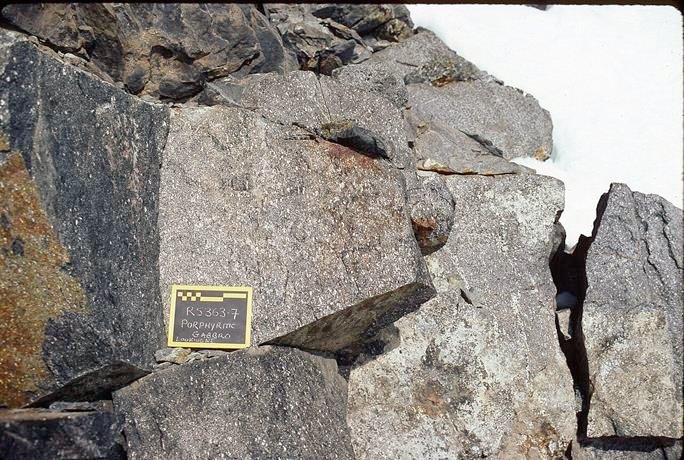
Lastly, gabbro is mostly a plutonic rock. However, some are extrusive, i.e., those that form in thick basaltic lava flows.
6. Phonolite porphyry
Phenocrysts in porphyritic phonolite are mostly leucite, nepheline, and alkali feldspar in a fine-grained groundmass.
The groundmass has alkali feldspar, feldspathoids, and less often plagioclase. Also, it may have minor augite, diopside, iron-rich olivine, sodic amphibole, biotite, and accessory minerals like apatite, apatite, etc.

Lastly, phonolite is a fine-grained volcanic rock, equivalent to feldspathoid syenites such as nepheline, sodalite, or leucite syenite.
7. Diorite porphyry
Porphyritic diorite is an intermediate plutonic rock with mostly andesine (plagioclase) and, less often, hornblende, biotite, or pyroxene floating in finer but phaneritic groundmass.
Minerals in the groundmass are mostly plagioclase with minor augite, other pyroxenes, and hornblende.
Also, groundmass may have quartz, biotite, alkali feldspar, muscovite, and accessory minerals such as apatite, zircon, garnet, ilmenite, and magnetite.
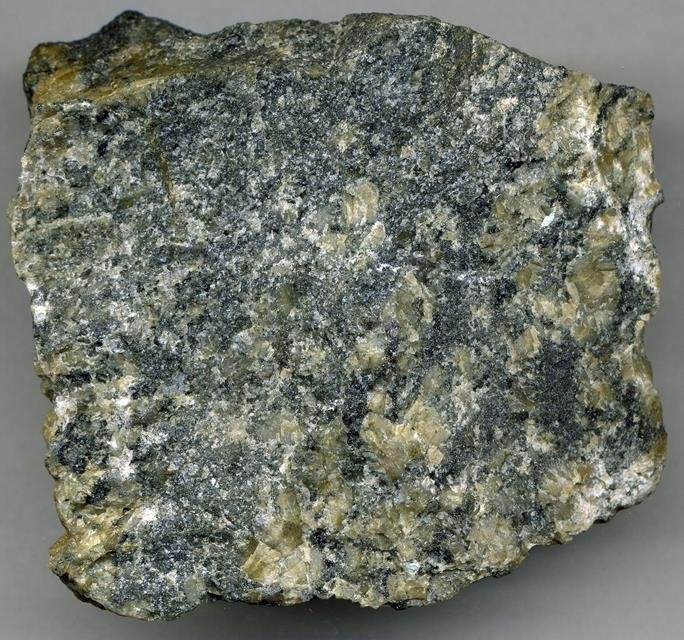
8. Trachyte porphyry
Porphyritic trachyte is a volcanic rock with phenocrysts of sanidine, plagioclase, and less often amphibole, pyroxene, or biotite in a fine-grained (aphanitic) groundmass.
The groundmass has mostly alkali feldspar and some plagioclase. Also, it has minor mafic minerals like augite, hornblende, biotite, olivine, etc., and accessory minerals like magnetite, zircon, ilmenite, titanite, and apatite.
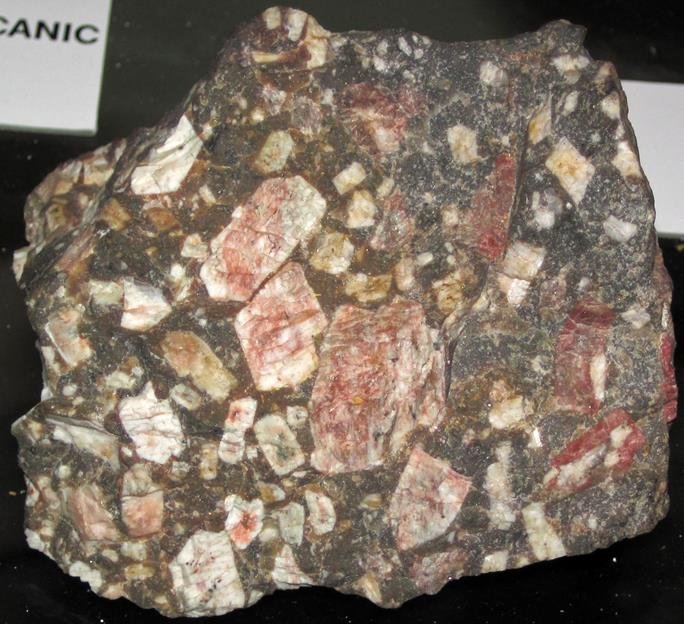
Lastly, this rock is the volcanic equivalent of syenite, a plutonic rock.
9. Llanite
Llanoite or llanite is a reddish porphyry rhyolite from Llano County in Texas, USA. It has reddish microcline and small bluish-green patches of quartz and light grayish-orange perthitic phenocrysts set in a finely crystalline dark-brown groundmass. This groundmass has quartz, biotite and feldspar crystals.
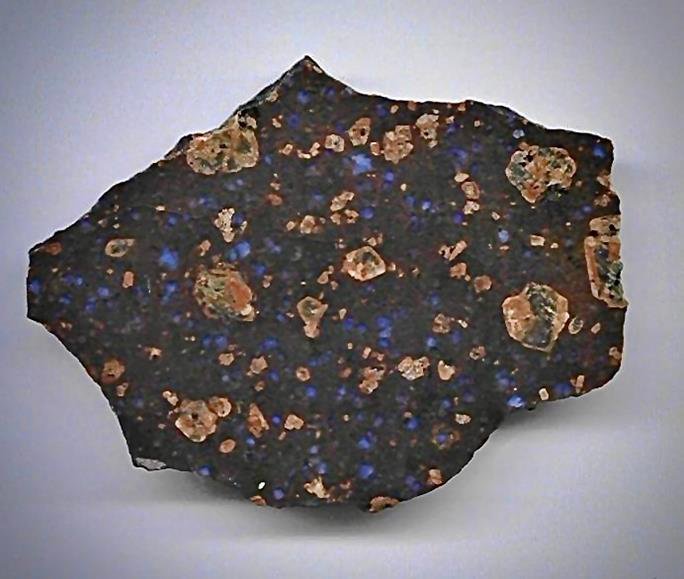
10. Green porphyry (Porfido Verde)
Classical time green porphyry from a quarry between Sparta and Marathonisi in Laconia province in Greece. This rock was known as marmor lacedaemonium viride and later perfidio serpentino. However, it is not a serpentinite.
It has an olivine green groundmass sprinkled with light-green feldspar crystals. The greenish color is from included chlorite and epidote.
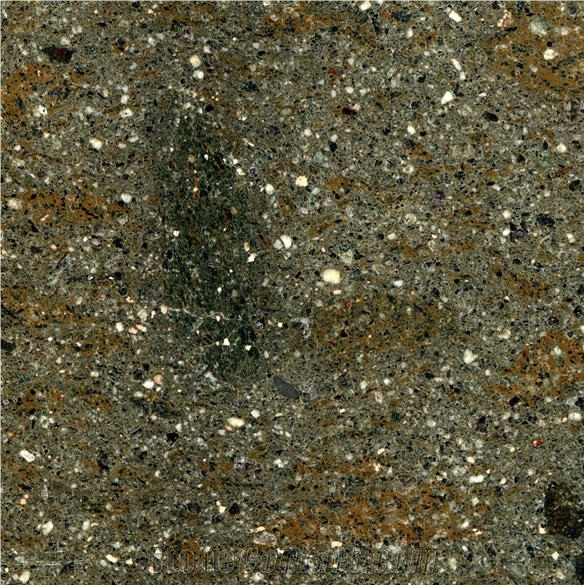
11. Dacite
Porphyritic dacite rocks have phenocrysts of plagioclase (oligoclase, rarely sanidine) and quartz in a fine-grained or aphanitic groundmass. Also, it may have a few biotite, pyroxenes (augite, enstatite, or pigeonite), hornblende, apatite, and Fe-Ti oxide phenocrysts.
On the other hand, the groundmass has mainly plagioclase, quartz or tridymite, and lesser alkali feldspar. Also, it often has minor hornblende, pyroxenes, biotite, Fe-olivine, and some glass.
Common accessory minerals in the groundmass include zircon, garnet, magnetite, and ilmenite.
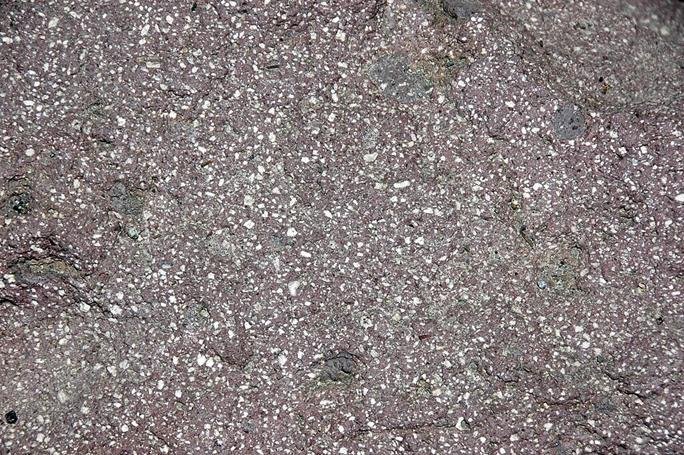
Some phenocrysts in dacites sieve texture and zoning are common in phenocrysts, with some showing glomeroporphyritic texture.
12. Lamprophyre
These are several mesocratic or dark-colored porphyritic rocks with amphibole, pyroxene, and biotite-phlogopite phenocrysts in feldspar or feldspathoid like analcime or melilite groundmass. Also, the groundmass often has biotite, pyroxene, and sometimes.
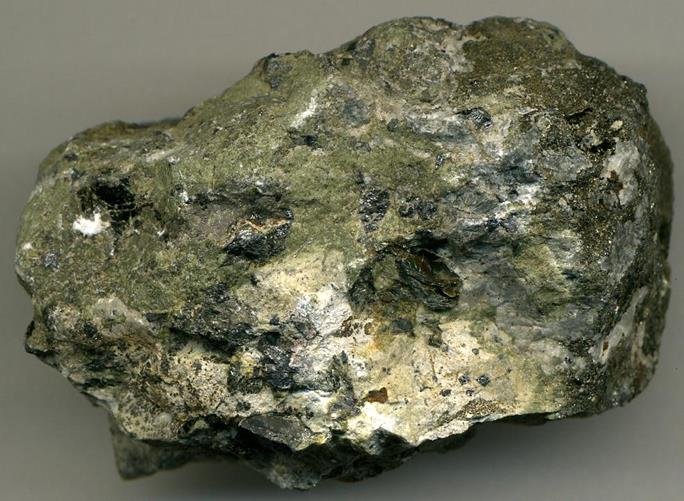
Most of these rocks occur in shallow sills, plugs, dikes, or stocks and are enriched with volatiles, alkalis (Na2O and K2O), titanium strontium, and barium.
13. Granodiorite porphyry
Porphyritic granodiorite rocks have large, pinkish alkali feldspar phenocrysts, up to 6 cm in finer but phaneritic matrix with gray feldspar and quartz and black biotite. Also, the groundmass may have amphibole and accessory minerals.
Plagioclase phenocrysts show complex twinning (Carlsbad-twinning), epitactic growth and zoning.
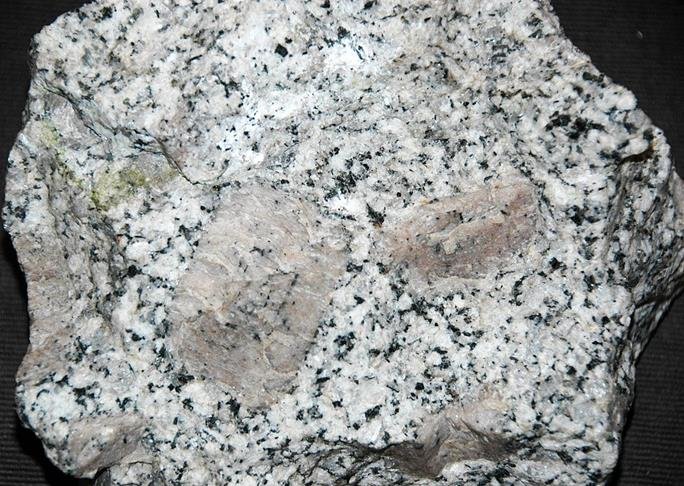
14. Porphyritic monzonite
Monzonite porphyry rocks have chemically zoned plagioclase and alkali feldspar in a fine but phaneritic groundmass.
The groundmass has alkali feldspar, plagioclase, hornblende, biotite, and sometimes olivine, pyroxene or quartz. Also, it may have accessory minerals like apatite, titanite, Fe-Oxides, allanite, and rarely kaersutite.
In monzonite, plagioclase is oligoclase to andesine, while alkali feldspar is orthoclase and less often microcline.
Monzonite in which 5-20% quartz of the QAPF content is quartz monzonite. Some are porphyritic and often have quartz phenocrysts in addition to plagioclase and alkali feldspar.
An example of quartz monzonite porphyry occurs at Bingham Canyon or Kennecott Copper Mine, SW Salt Lake City in Utah, US. This rock has intruded sedimentary rocks.
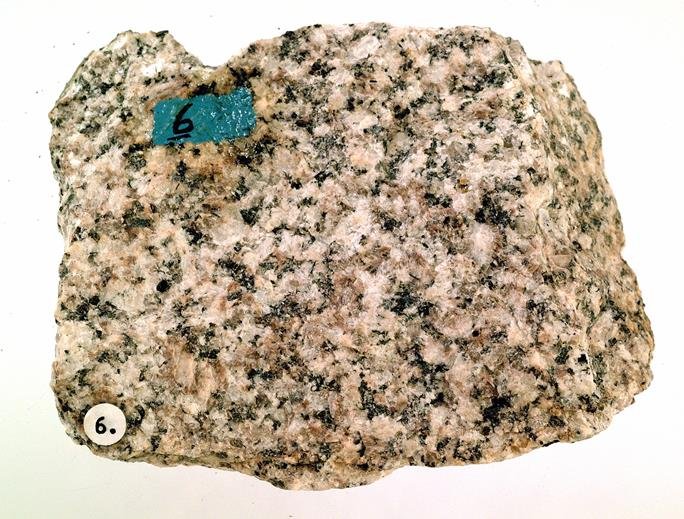
15. Latite
Porphyritic latite has nearly equal plagioclase (andesine or oligoclase) and K-feldspar (sometimes sanidine) phenocrysts and sometimes quartz in a fine-grained groundmass.
The groundmass has alkali feldspar, plagioclase, clinopyroxene, orthopyroxene, olivine, sometimes biotite, and rarely hornblende. Accessory minerals include Fe-Ti oxides, zircon, tridymite, and apatite.
Sometimes, the groundmass may have trachytic with strongly aligned sanidine and plagioclase laths.
